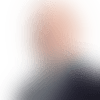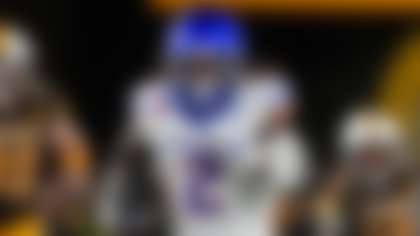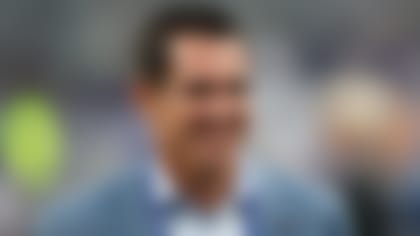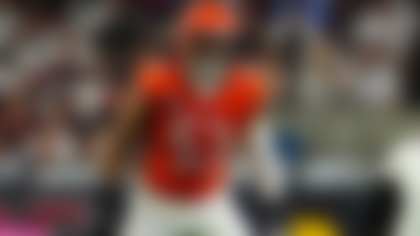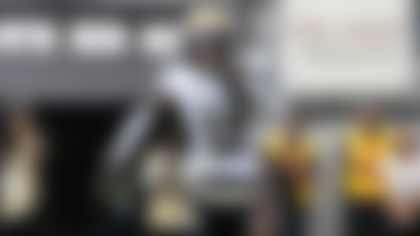In Around The NFL's "Making the Leap" series, we spotlight emerging players to keep an eye on in 2016. Whether rising from no-namer to quality starter or vaulting from standout to superstar, each of these individuals is poised to break through in the coming campaign.
When Mohamed Sanu left the Bengalsto sign with the Falcons in March, his five-year, $32.5 million contract was widely panned as one of the worst moves of free agency. Why would Atlanta shell out nearly $7 million annually for a drop-prone, speed-challenged gadget receiver who disappointed as the fifth option in Cincinnati's aerial attack last season?
The answer lies in the projection of Sanu's unique skillset with a featured role in Falcons coordinator Kyle Shanahan's offense.
Why Sanu is on the list
The answer is two-pronged, yet quite simple: Sanu is graduating from an offense in which he was an afterthought to one in which he will play second fiddle to All-Pro Julio Jones. More importantly, he proved during the first half of the 2014 season that he can excel as a focal point of the game plan.
While most of the attention on Sanu's 2014 performance concentrated on his second-half decline and league-leading 15 dropped passes, that ignores the impressive first-half game film in which he excelled as the No. 1 receiver while A.J. Green and Marvin Jones were sidelined with injuries. Sanu was Cincinnati's most valuable offensive threat over a five-game stretch, averaging 100 yards from scrimmage on nearly 10 targets per game from Week 5 to Week 9.
Play caller Hue Jackson began building game plans around Sanu's triple-threat skill set as a receiver, runner and passer. Formerly limited to routes underneath the coverage to take advantage of Green's ability to draw extra attention, Sanu started making plays downfield, winning one-on-one matchups, spinning out of tackles and converting third downs as Andy Dalton's go-to target.
Sanu's speed was questioned coming out of Rutgers, but he proved to have sufficient "football speed," with fluid cuts in and out of his breaks. By midseason, he was on pace for an astonishing 78 catches, 1,336 yards from scrimmage and eight touchdowns. But then Green returned, rookie power runner Jeremy Hill was thrust into a workhorse role and Sanu vanished from the offense in the final two months of the season.
NFL Media analyst Nate Burleson, who served as a reliable second fiddle to the two most dominant receiving talents of the 21st century in Randy Moss and Calvin Johnson, firmly believes Sanu has what it takes to fill that role opposite Julio Jones.
"As a guy who made a living off of being a No. 2, I know how important that role is," Burleson said last month on NFL Network's "Total Access." "So for me, picking up a guy like Sanu ... There is no doubt in my mind that he is going to be one of the best No. 2s in this league. ... With a guy like Julio, and a bigger receiver backing him up at the No. 2 position, this means that this offense has a lot more versatility than it already has."
Obstacles he'll face
Sanu makes his money as a crafty, friendly target working inside the numbers. It's fair to wonder, though, if he lacks the athletic explosiveness and catch radius to stretch the field outside the numbers and vertically. Does he have the suddenness to consistently separate from man coverage on intermediate and deeper routes?
Much like Jarvis Landry in Miami, Sanu relies heavily upon manufactured touches. He's at his most effective on package plays -- such as end-arounds, slants, bubble screens and trick plays as the passer -- within 10 yards of the line of scrimmage. In other words, it's the play caller as much as the quarterback who is responsible for putting the ball in his hands.
Expectations for 2016
The opportunity is certainly there for the taking. With chronic knee injuries turning Roddy Whiteinto a ghost of his former self, Ryan desperately turned to journeyman Leonard Hankerson as his second read in the aerial attack early last season. Rib and hamstring injuries sent him to the sideline and, ultimately, to the waiver wire, but at the quarter-season mark, Hankerson was on pace for 68 catches, 964 yards and eight touchdowns.
Ironically enough, it was Hankerson's absence that sprang a leak in Ryan's passing game. Without that second option capable of getting open, stretching the field and making plays after the catch, the Falcons' receiving corps lacked any semblance of playmaking ability beyond Jones' excellence.
A more versatile, more durable and more reliable weapon, Sanu should prove to be a major upgrade over Hankerson. With an increase in snaps and touches, he will form a symbiotic relationship this season with Ryan -- the two will help each other recapture an effectiveness that went missing in 2015. With a unique, multi-dimensional skill set that calls to mind former Steelers gadget player Antwaan Randle El, Sanu also will allow Shanahan to get more creative as a schemer and play caller.
I don't expect Sanu to duplicate his on-pace numbers from the first half of the 2014 season. I do believe he will emerge as an effective second fiddle to Jones, touching the ball at least 80 times as a receiver, runner and passer while accumulating 1,000 yards from scrimmage.
